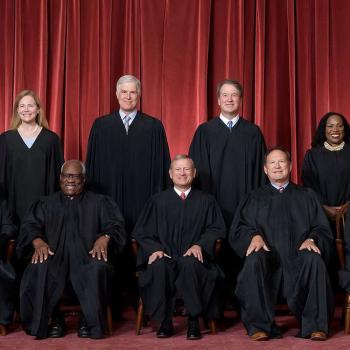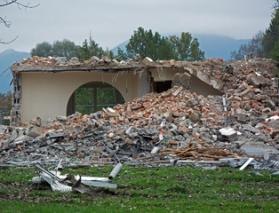Americans are bitterly polarized politically, socially, economically, culturally, generationally, religiously. . . .And yet, a study has found something that Americans of all perspectives can agree on: architecture. Specifically, disliking modern architecture and preferring traditional architecture.
Evita Duffy of The Federalist has written an article entitled Nearly Three-Quarters Of Americans Are Sick Of Modern Architecture, with the deck “Since the overwhelming majority of Americans have proven time and time again that they prefer traditional architecture, why do government agencies force ugly buildings on the American people?”
She is reporting on the results of a Harris poll commissioned by the National Civic Art Society. It was prompted by a proposed executive order from the Trump administration that would require federal buildings follow the tenets of “classical” architecture, which the order defines as including a variety of traditional styles (Gothic, Romanesque, Spanish, Mediterranean, etc.). This would reverse a 1962 order from the Kennedy administration favoring modernist styles, which would come to include Brutalism, which employs unadorned concrete and a purposefully dehumanizing scale without any ornamentation.
The architectural profession and the arts establishment has reacted to the proposed executive order with outrage and indignation. The Harris study asked over 2,000 American citizens which style they preferred. Researchers showed the subjects a series of photos of governmental buildings (courthouses, office buildings, post offices, etc.) and asked which ones they liked and which ones they didn’t.
The results were remarkable, not only in its final tally, showing that 72% of Americans preferred the traditional styles. But in the degree of consensus found across all groups.
Here are findings from the final report, Americans’ Preferred Architecture for Federal Buildings:
Overall, 72% of Americans prefer traditional architecture, and 28% prefer modernist architecture.
By political party, 73% of Republicans, 70% of Democrats, and 73% of Independents prefer traditional architecture.
By sex, 67% of men and 77% of women prefer traditional architecture.
By age, 68% of 18-34 year-olds, 65% of 35-44, 75% of 45-54, 78% of 55-64, and 77% of 65+ prefer traditional architecture.
By race, 75% of Whites, 62% of Blacks, and 65% of Hispanics prefer traditional architecture.
By region, 73% of Americans living in the Northeast, 73% in the South, 74% in the Midwest, and 69% in the West prefer traditional architecture.
By income, 73% of Americans making less than $50K per year, 74% of those making $50-$74.9, 73% of those making $75-$99.9K, and 70% of those making $100K+ prefer traditional architecture.
By education, 72% of Americans with a high school education or less, 73% with some college, and 72% of college graduates or higher prefer traditional architecture.
So around two-thirds to three-quarters of Americans from all demographics surveyed prefer traditional architecture for their government buildings. That sounds like confirmation of the classical principle of there being a universal, common humanity.
Classical aesthetic principles of harmony, symmetry, proportion, and a human scale can be applied, as was said, in a wide variety of different styles. They can even be applied in contemporary styles to make them more appealing.
But the connection to government buildings is especially telling. The features of classical architecture–evident, for example, in the explicit neo-classicism of the U. S. Capitol, the Lincoln Monument, and the National Archives–derive from and express the values of the Greek Democracies and the Roman Republic. Such buildings may be grand, but citizens who walk inside feel affirmed, a part of an order larger than themselves, but one in which they are full participants. The decorative details and the overall aesthetic impact express the truth that the government that built this structure is obliged to please me, the ordinary citizen, rather than the other way around.
That is the message of the Brutalist public buildings, such as the FBI headquarters or the Hubert H. Humphrey office building in Washington, D.C. Brutalism makes the citizen feel small, even crushed by the massive scale, the heavy slabs of concrete and steel, and the depersonalized feel of the place, which has eliminated all ornamentation and aesthetic considerations. The citizen must serve the government, rather than the other way around. The modernist buildings are also confusing to the citizen, who doesn’t understand the design and finds it disorienting. This too is expressive of modern government, conveying the notion that citizens do not have sufficient knowledge and so must defer to the experts.
Photo: Hubert H. Humphrey Office Building [Department of Health & Human Services, Washington, D.C.] by Sarah Stierch, CC BY 4.0 <https://creativecommons.org/licenses/by/4.0>, via Wikimedia Commons














